Cedar Park mom credits Travis County ambulance blood program for saving her life
Karanai Ravenscroft is sitting on the floor of her Cedar Park home with her two daughters Liv, 3, and Noa, 5. They are finding the pieces of an ocean puzzle: There's a Nemo; there's an orca; there's a Dory.
It's a typical day for the mom of four, yet it's a day she's grateful for every day since she almost bled to death on May 11, 2022.
This Thanksgiving she is thankful for blood donors and Austin-Travis County Emergency Medical Services staff who saved her life. She says she is alive today because her Cedar Park home is in Travis County and the Austin-Travis County Emergency Medical Services started a pilot whole blood program two years ago.
Thanksgiving, she said, "is not simply another meal (no meal will even be just another meal), rather the opportunity which has been gifted for to me to share another day, another memory, another breath, and another hug within the arms of those I love."
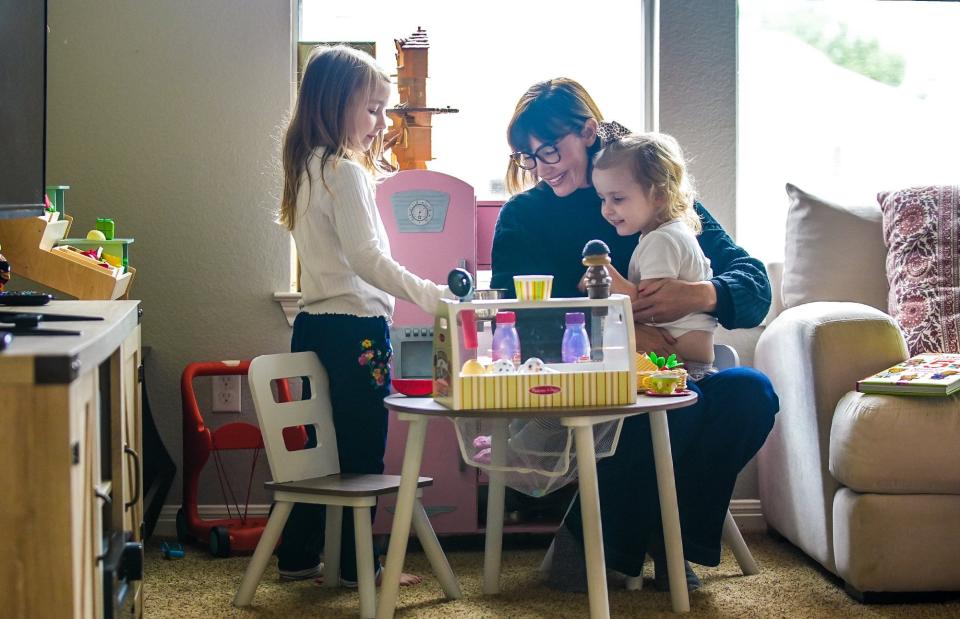
In the program, the district commander's truck carries a specialized cooler with O positive whole blood. When a call comes into 911 that has a clear potential loss of blood, that blood is sent to the scene, so the patient does not have to wait to reach the hospital.
Travis-County EMS started carrying blood in one of its seven districts to see if the plan worked. Paul Mallon, commander of the blood program, said there weren't many other EMS blood programs to tap for guidance.
The team had to figure out the type of coolers to use to keep the blood at the right temperature, between 2 degrees Celsius and 6 degrees Celsius. They also created a system to handle the blood supply and make sure to use the blood before it expired, 21 days from the day it is drawn.
This summer, the Austin-Travis County EMS blood program became a permanent program in all seven EMS districts. In October, Travis-County EMS gave its 200th unit of blood in the field.
"We knew we were going to save lives," said Dr. Heidi Abraham, the Austin-Travis County EMS deputy medical director.
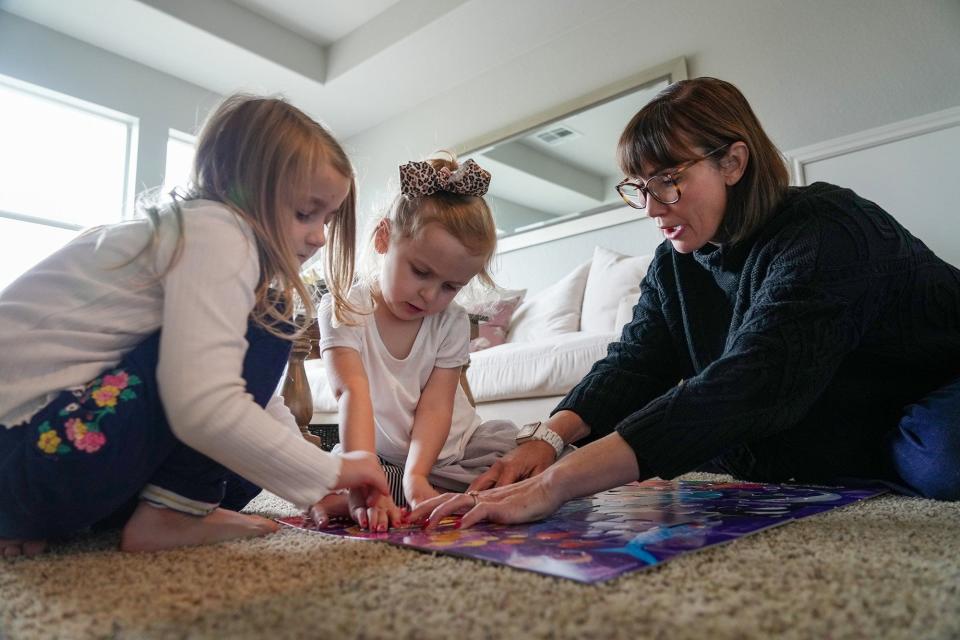
When time and blood are critical
One of those lives was Ravenscroft.
On May 10 at 4 p.m., she started bleeding profusely from a miscarriage. "Something was definitely wrong," she said. "I was walking down the hallway, and my family had to follow me to clean up the blood."
They called 911, and Ravenscroft remembers being taken into the back of the ambulance by an emergency medical technician.
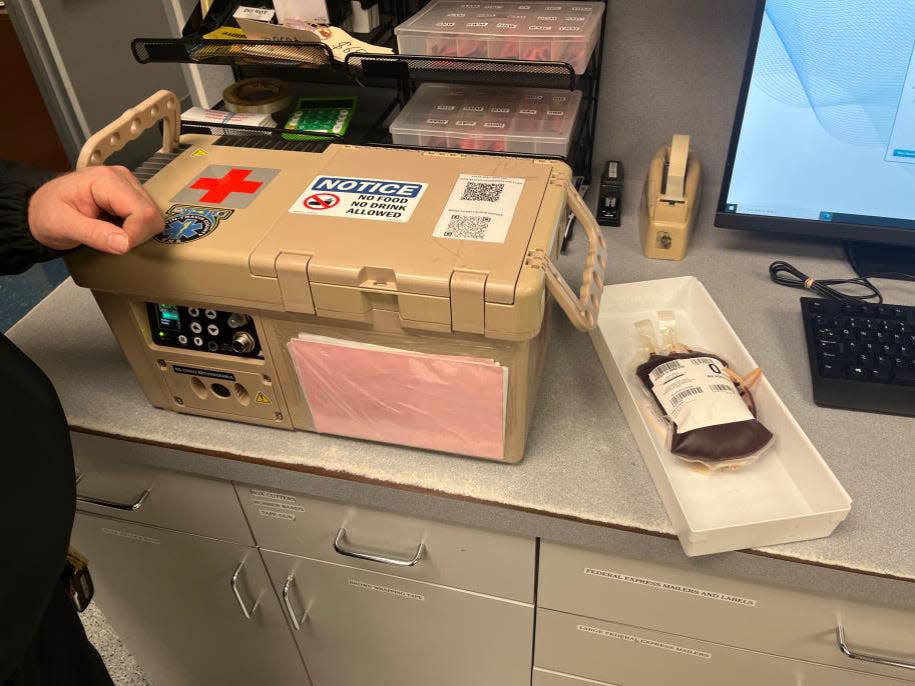
Ravenscroft is a breast cancer survivor, and she is O negative with many antibodies. She knew that if she received O positive blood, she might have a reaction. Medics decided she needed the whole blood immediately rather than wait to get to the hospital.
"It saved my life," she said.
They gave her one unit of blood in the ambulance before reaching the hospital, where she received another three units.
Doctors then performed procedures to stop the bleeding and remove the tissue from the miscarried fetus.

Giving whole blood in the field
Whole blood is specifically given in these cases because it has the coagulation properties needed to help stop the bleeding while replenishing oxygen through the red blood cells.
In a trauma or massive bleed, whole blood is given because "usually the best answers are the simplest ones," said Dr. Nicholas Steinour, division chief of emergency medicine at Ascension Seton hospitals. "In the field, if the victim of assault is losing whole blood, give them the thing they are losing."
One thing that has surprised Mallon and Abraham: EMS is giving whole blood for other medical reasons like gastrointestinal bleeds and miscarriages, not just car accidents, stabbings or shootings.
The patients who arrive at the hospital after receiving whole blood in the field are in more stable condition, Steinour said.
Since the program began, Steinour knows there are patients who would have died en route to the hospital if the blood had not been given, he said.
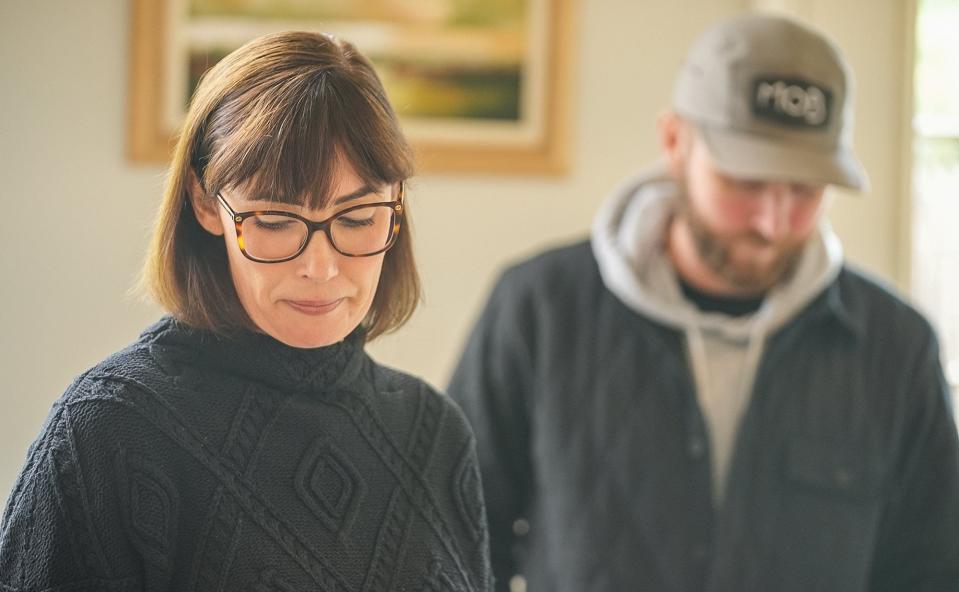
The need for more EMS help: 'Nail in the coffin': How Austin-Travis County EMS is grappling with ongoing vacancies
Understanding the blood supply process
Typically, whole blood is collected from healthy donors, who can give it every 56 days, and then it is split into red cells, plasma and platelets.
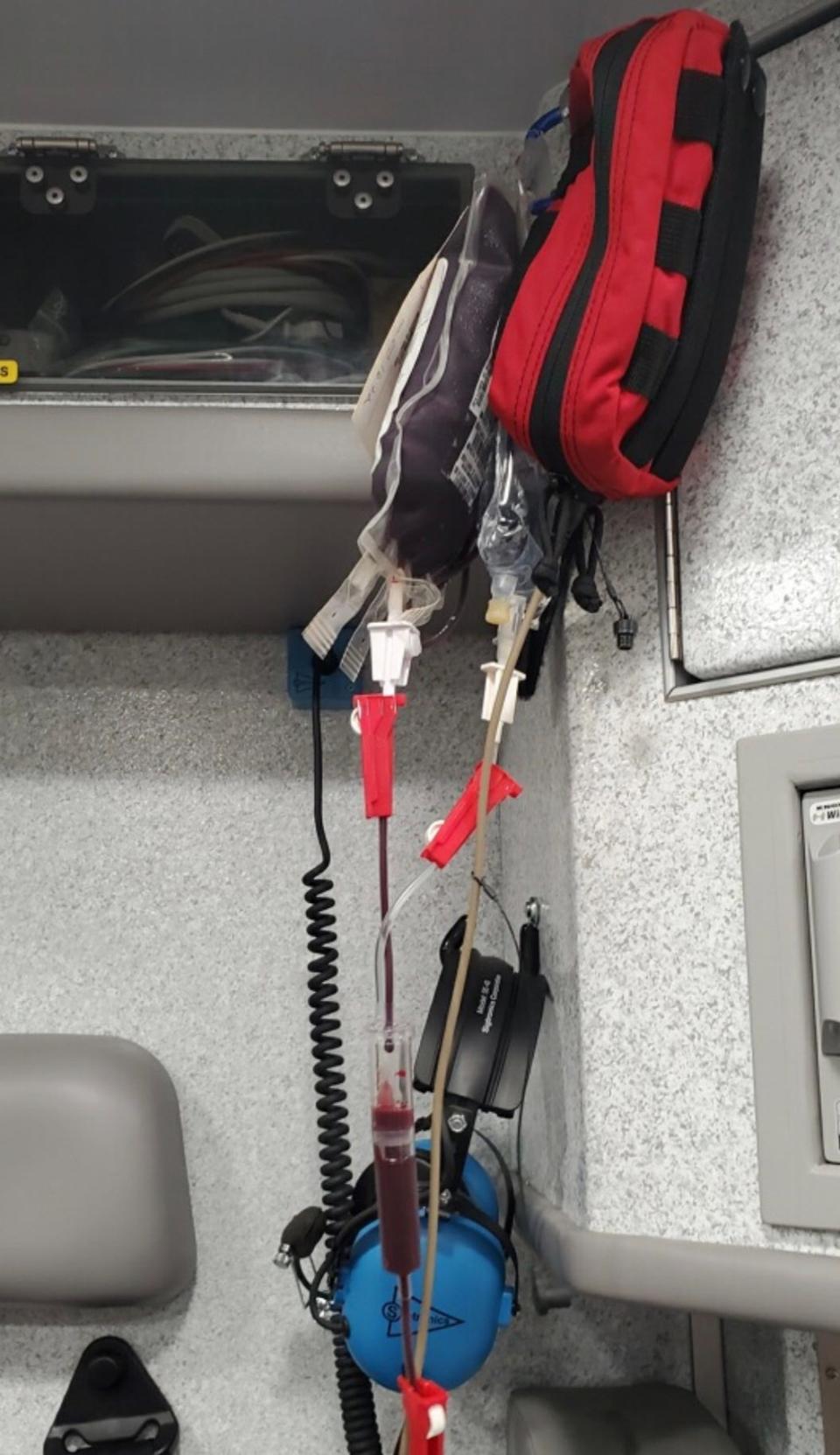
Each unit of whole blood can be used for multiple patients once it is split into parts, said Nick Canedo, We Are Blood vice president of community engagement.
Each blood part has its own purpose:
Red blood cells bring oxygen to the body.
Plasma carries proteins, vitamins, sugars, hormones, sugars, salts and fats.
Platelets carry the clotting factor.
We Are Blood says people who donate platelets commit to a two- to three-hour process and can give every seven days.
Not enough blood: As Austin and its surrounding area grows, so does the local need for blood donations
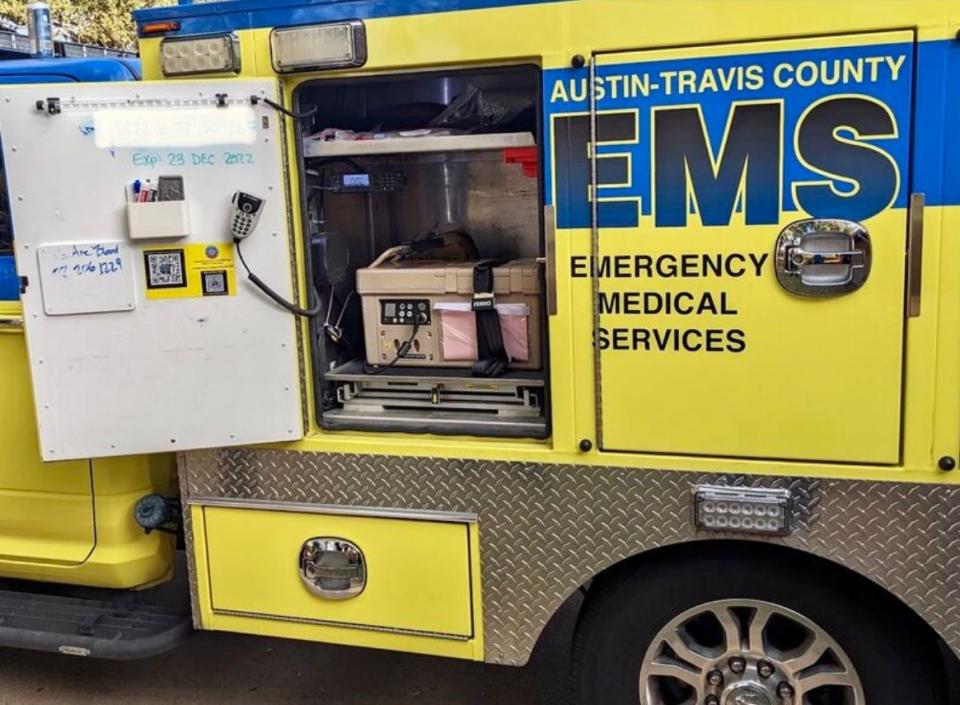
Having enough blood to keep some whole
The need for blood donors is increasing in Central Texas because of population growth and the growth of medical programs. Since 2017, the need for red blood cells has increased 43% and by 62% for platelets at centers served by We Are Blood.
More whole blood programs are coming online. STAR Flight, Dell Seton Medical Center, St. David's South Austin Medical Center and Ascension Seton Hays Medical Center also use whole blood. We Are Blood expects to supply whole blood to Williamson County Emergency Medical Services this month.
Travis-County EMS tries to make sure its supply is used before it expires. It plans to work with STAR Flight and area hospitals receiving whole blood to make sure everything gets used. We Are Blood also will redistribute units before they expire.
Ravenscroft thinks about the EMTs who helped save her life. She thinks of her two youngest children, saying, "I get to put them to bed because of this program."
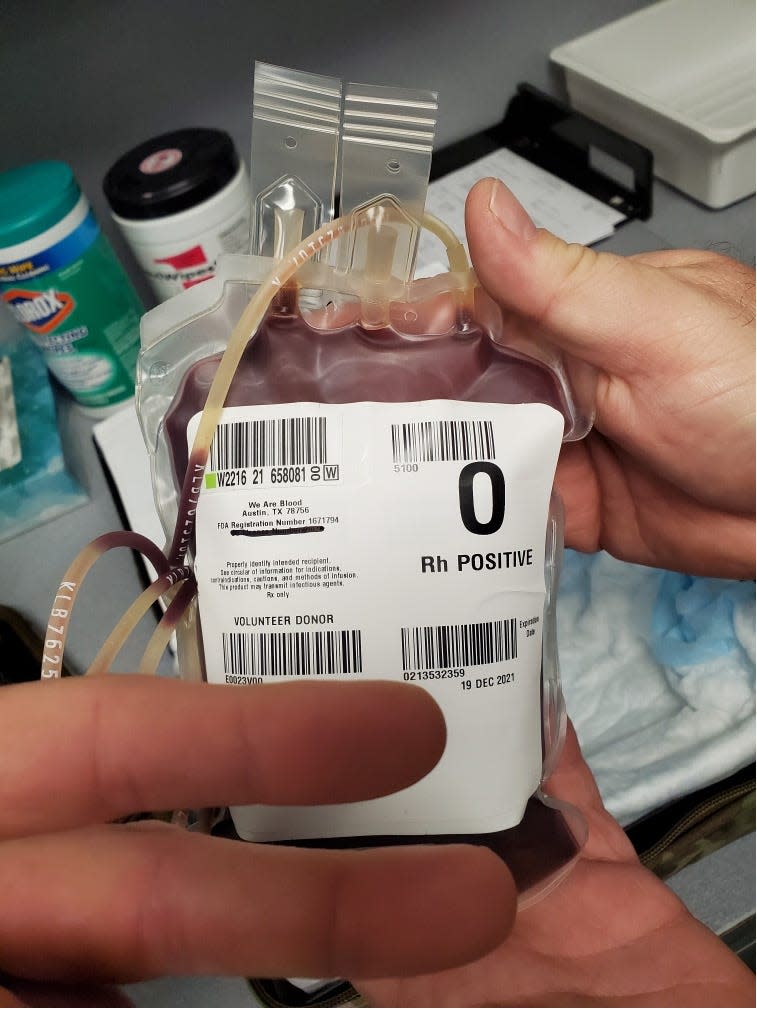
Where to give blood
We Are Blood has four donation centers, 4300 N. Lamar Blvd. and 3100 W. Slaughter Lane in Austin; 2132 N. Mays St., Suite 900, in Round Rock and 251 N. Bell Blvd., Suite 111A, in Cedar Park.
In addition, it has mobile blood clinics and drives throughout Central Texas. To make an appointment or find a mobile clinic or drive, go to weareblood.org/donate-blood.
You also can find out the eligibility requirements on that site. Eligibility has recently expanded.
This article originally appeared on Austin American-Statesman: Austin-Travis County EMS save lives with ambulance blood transfusions

